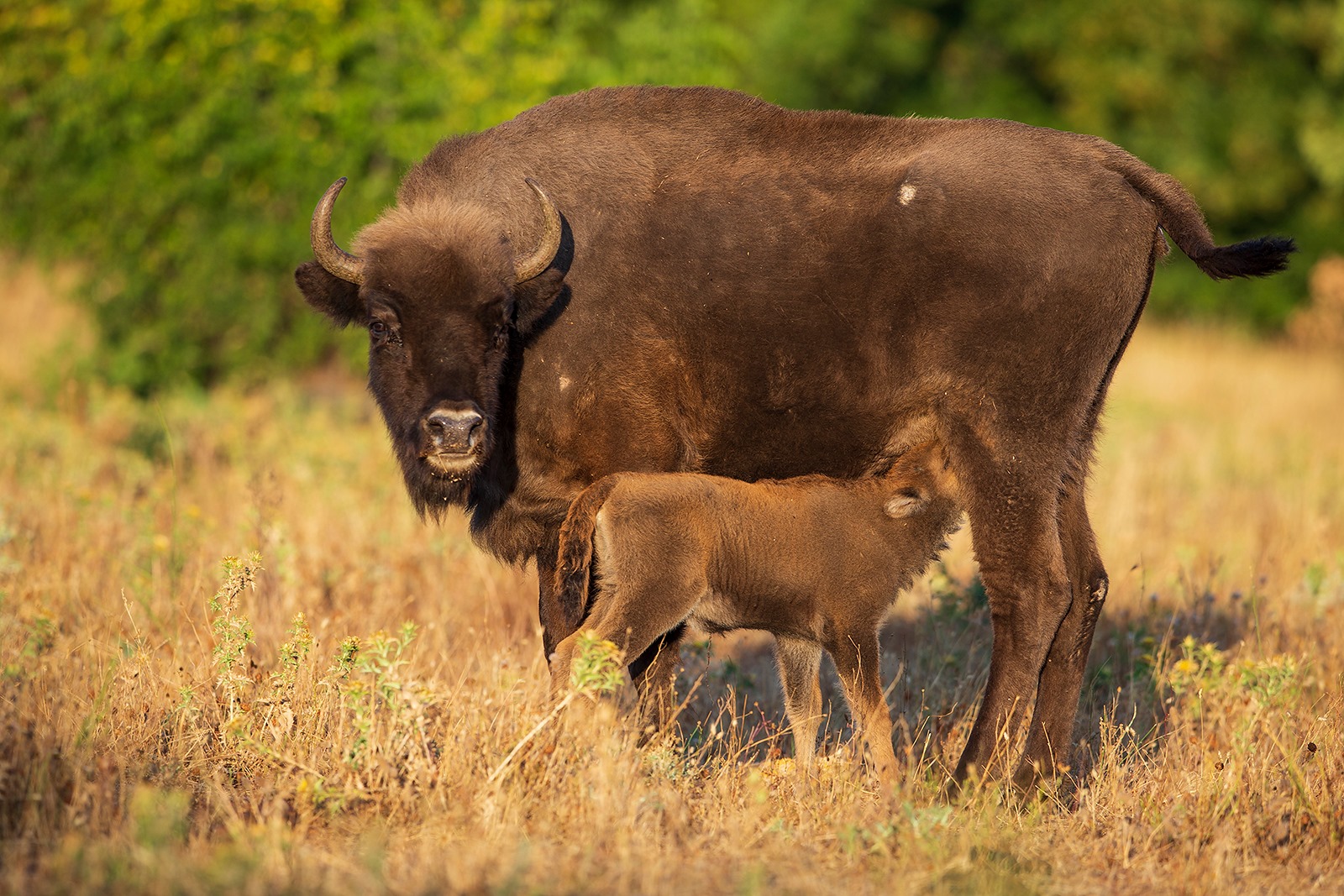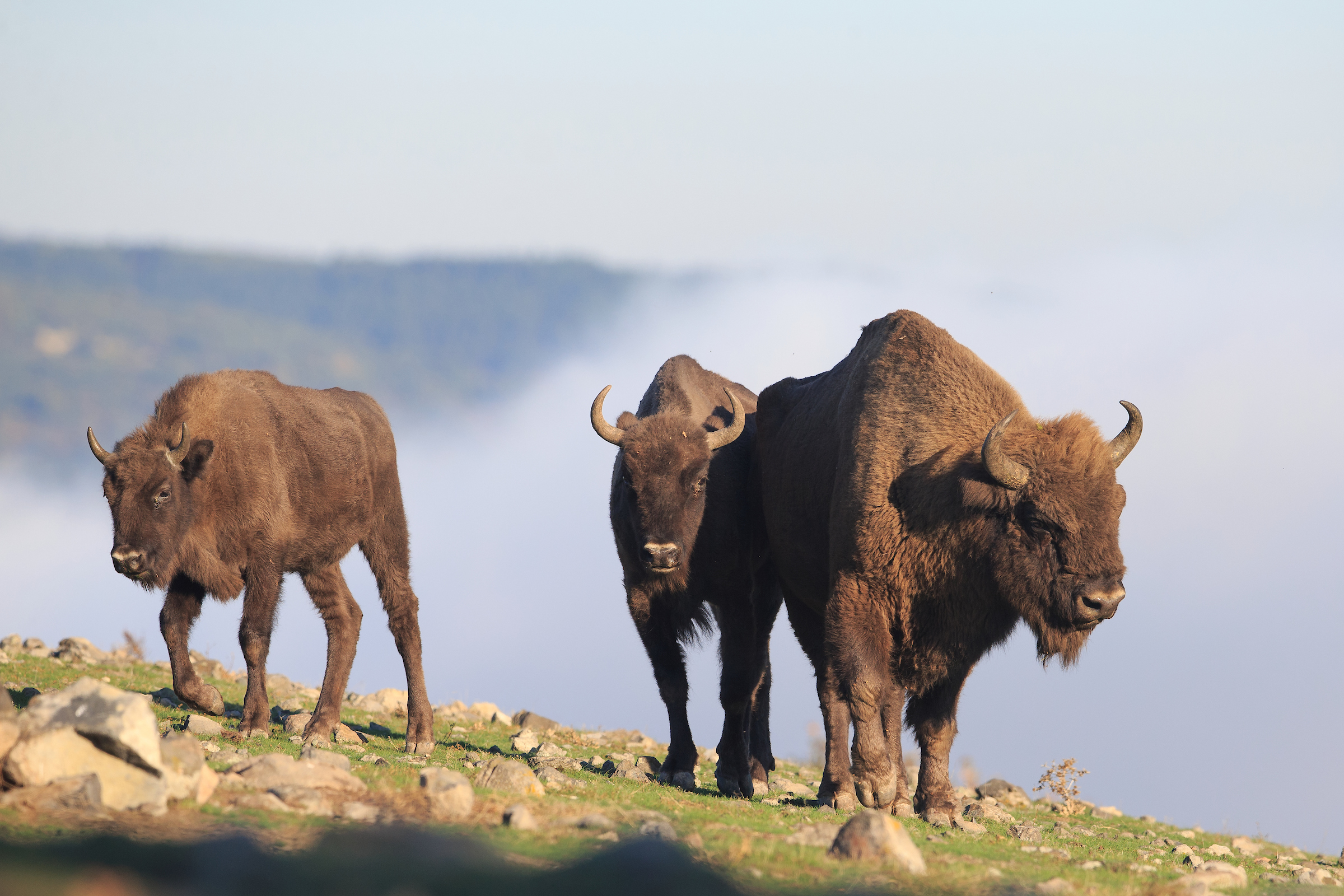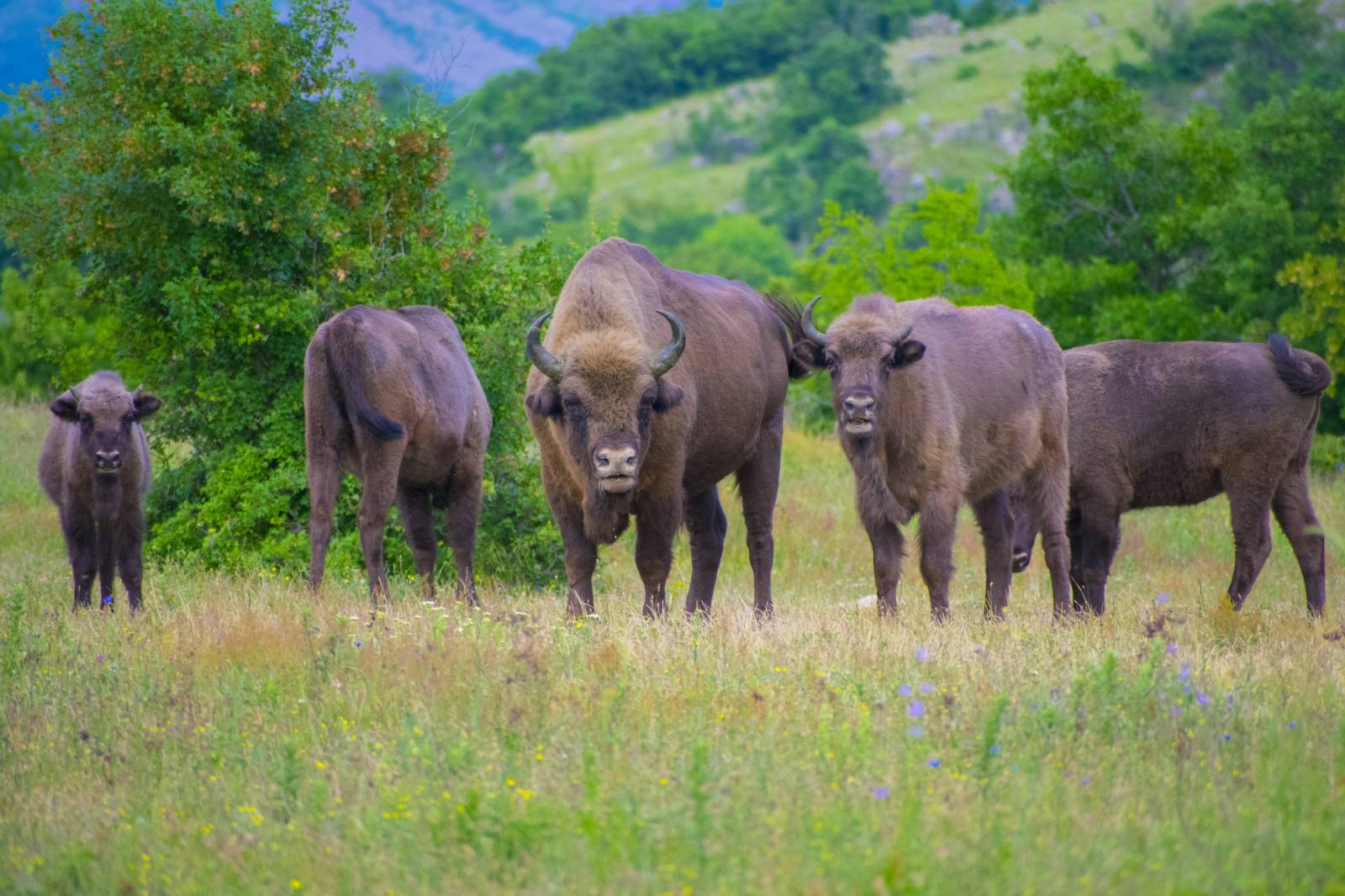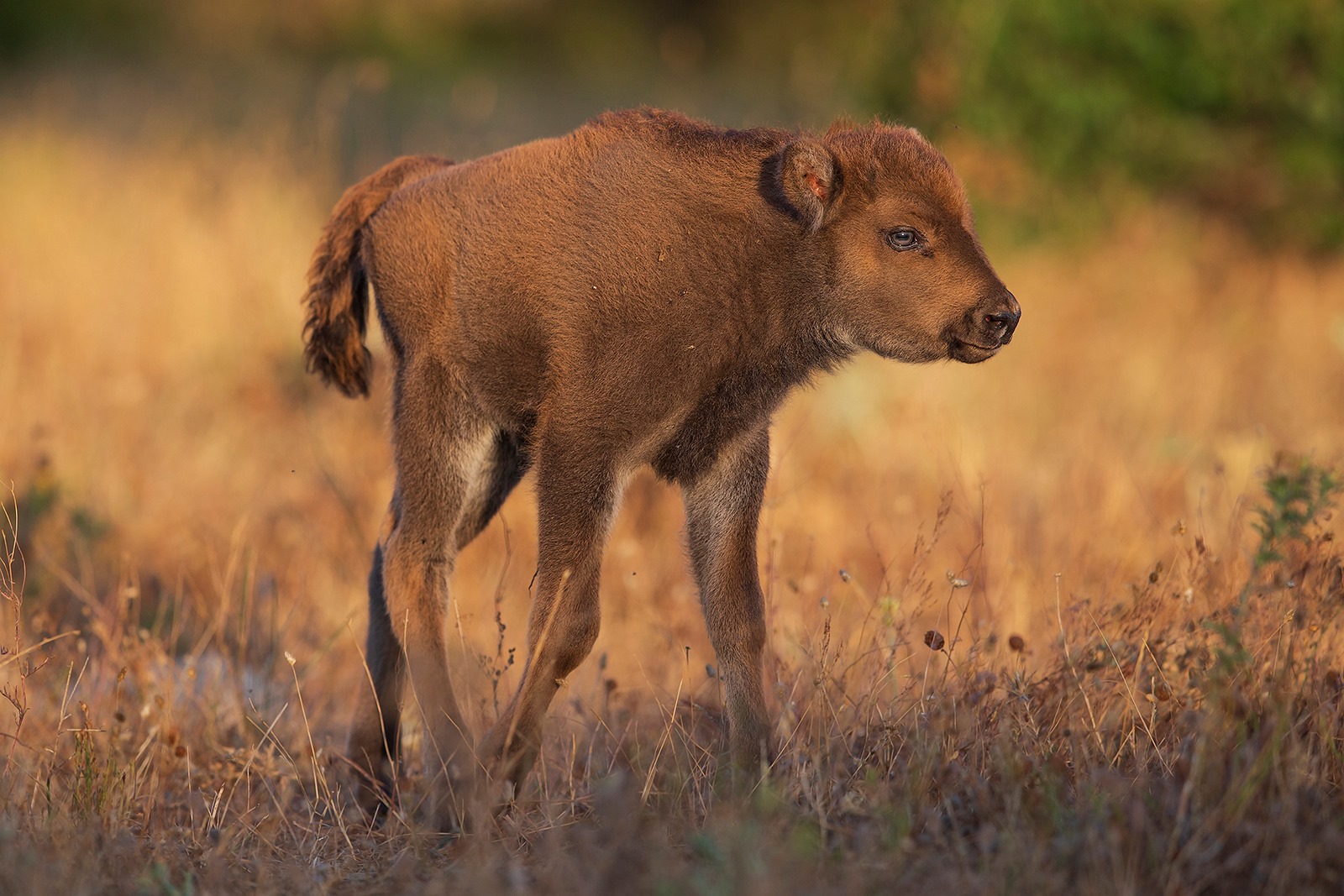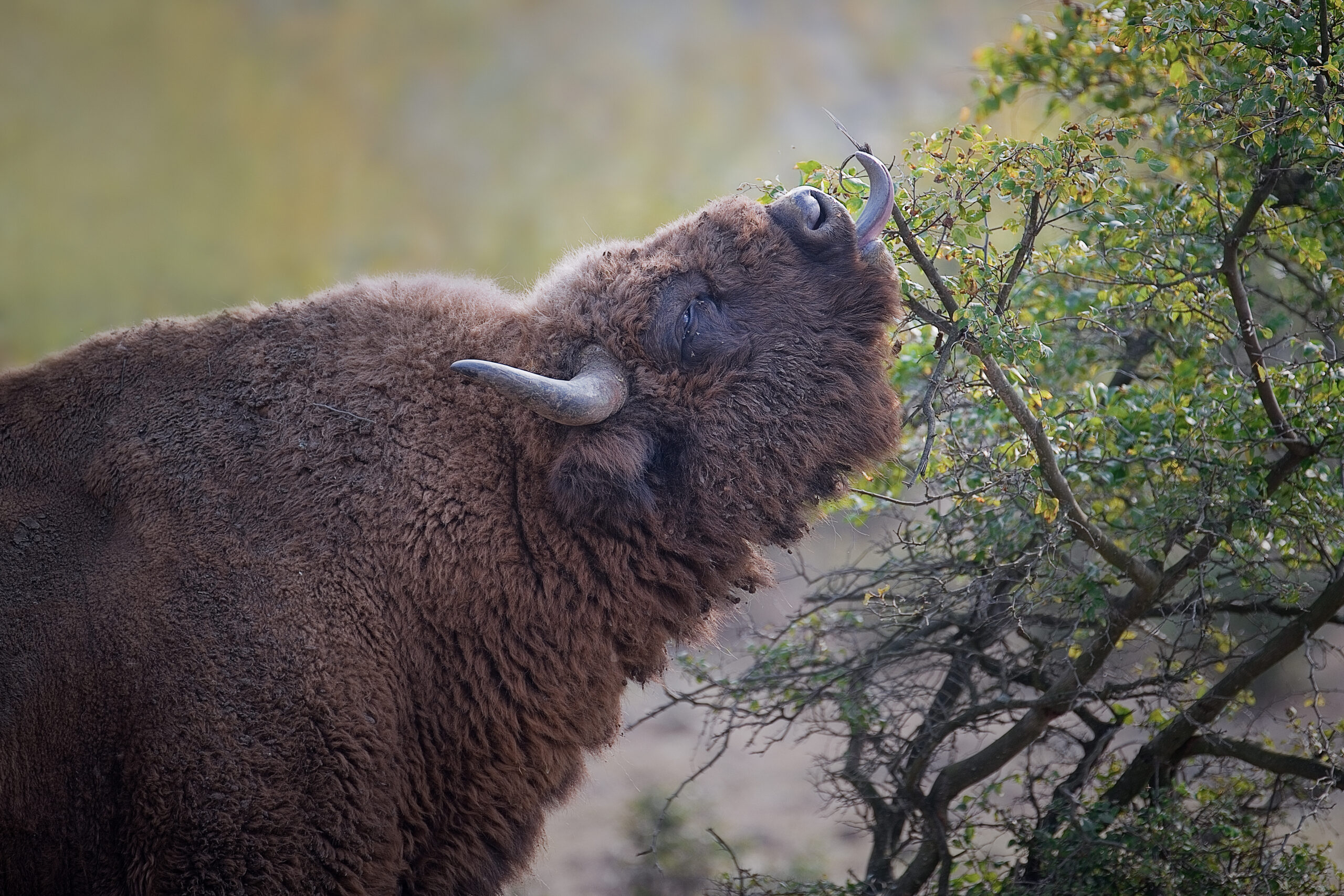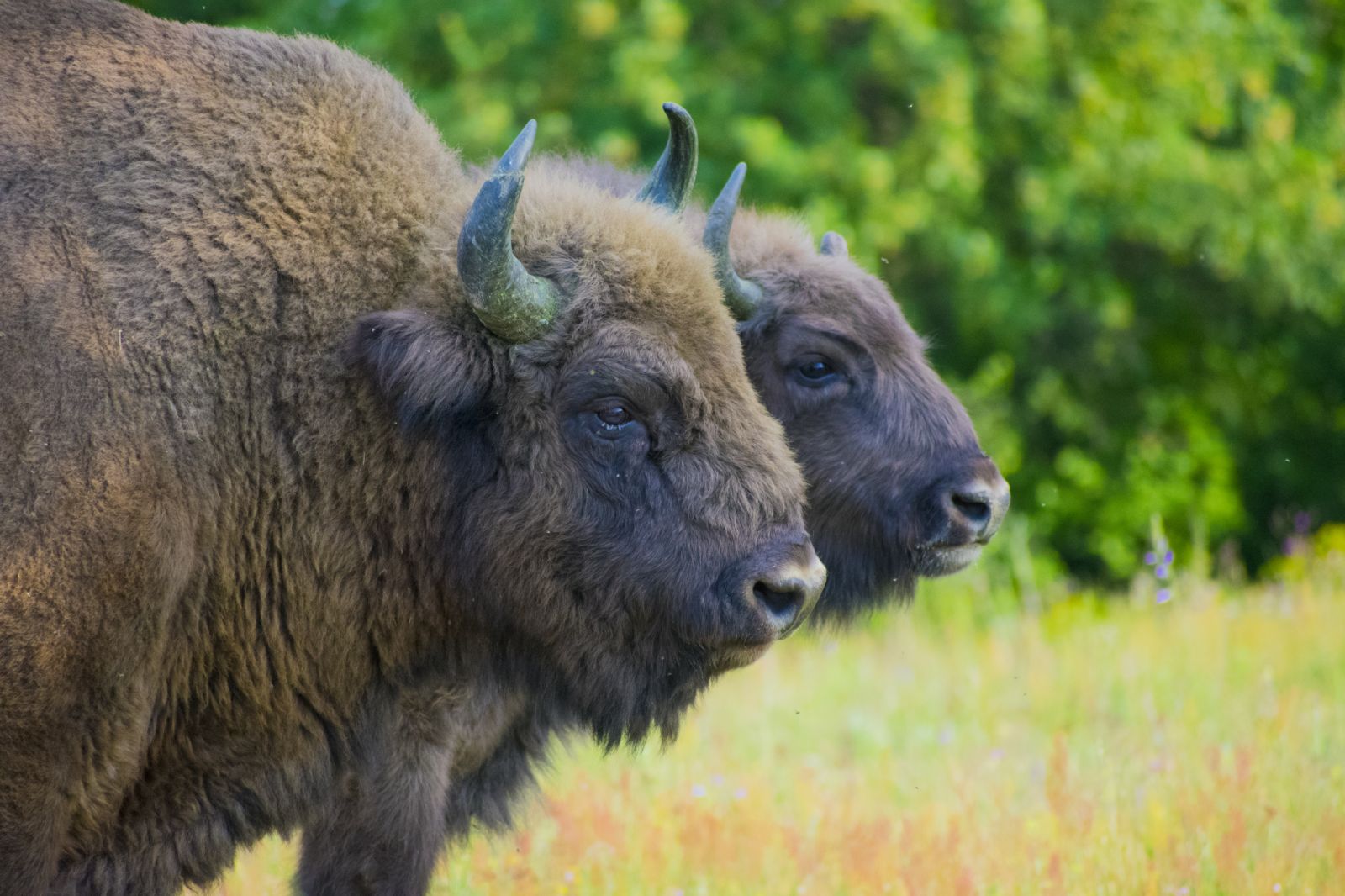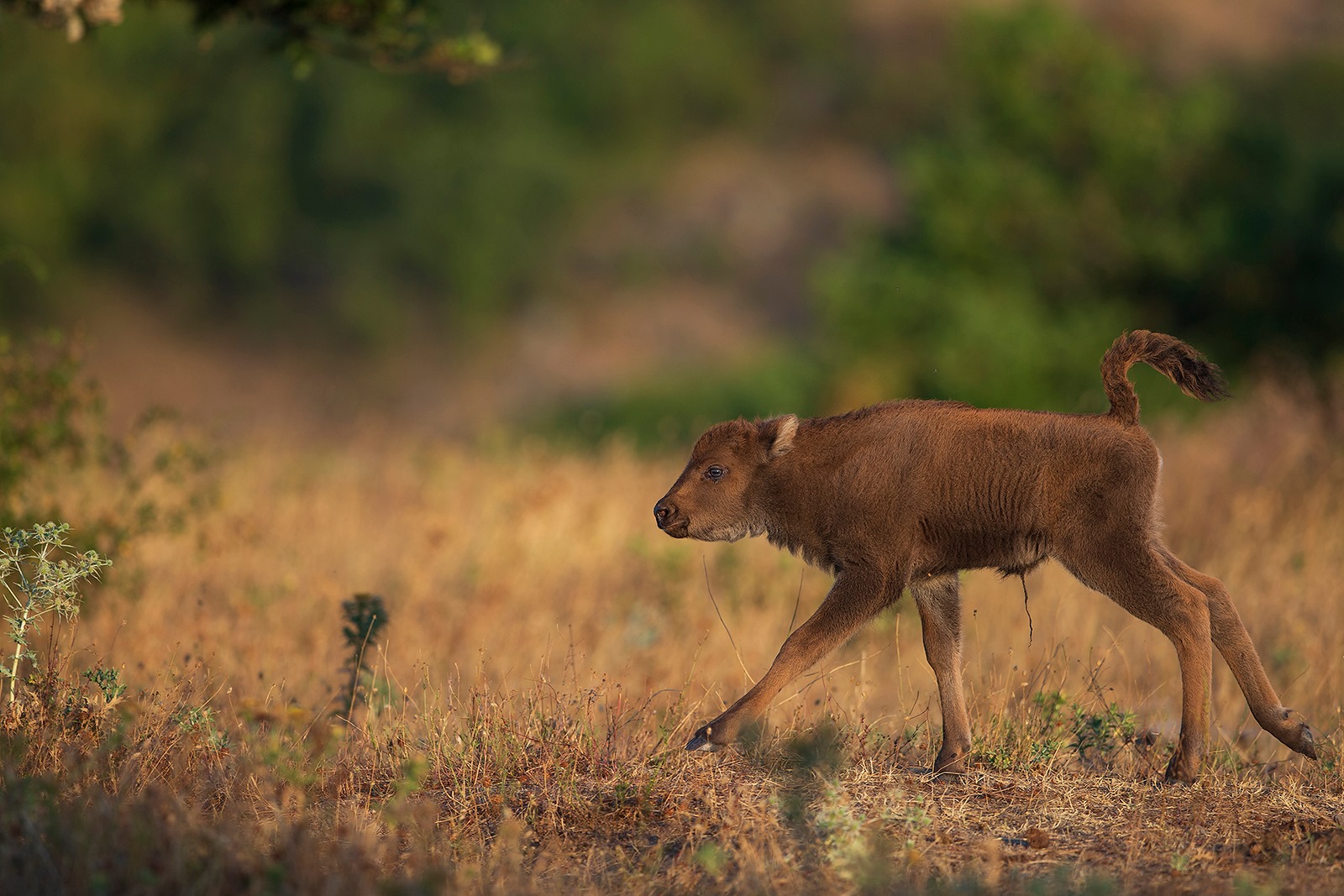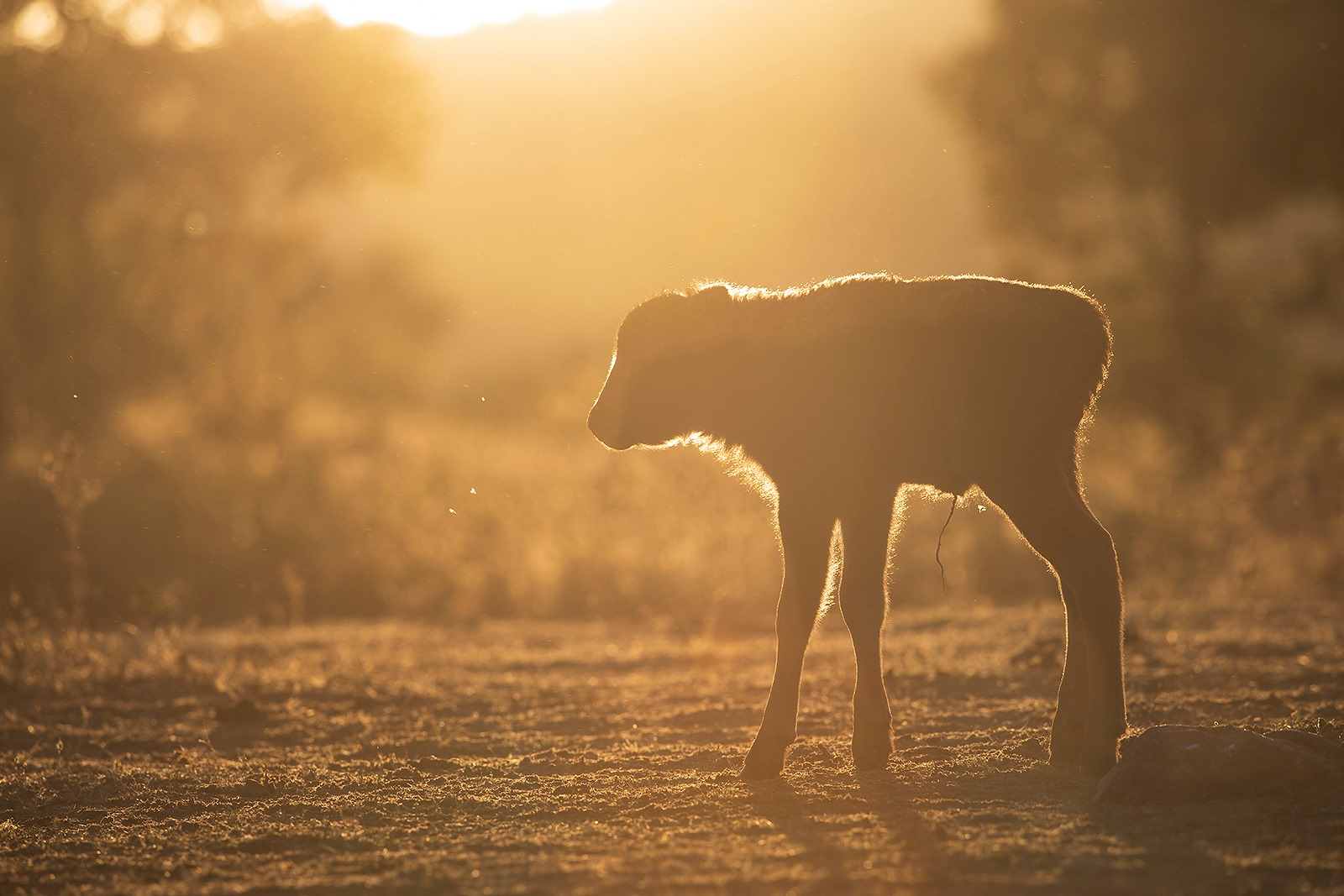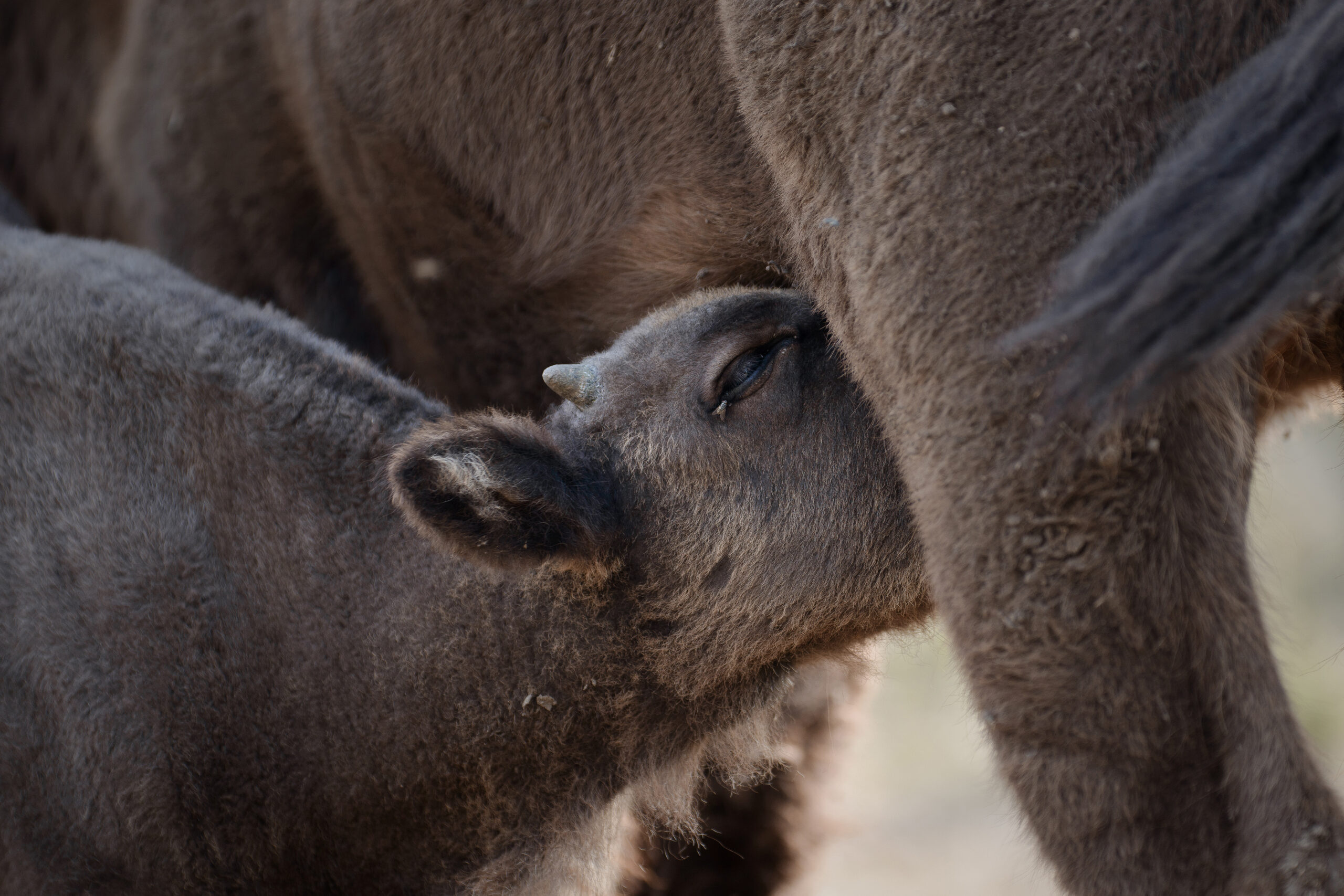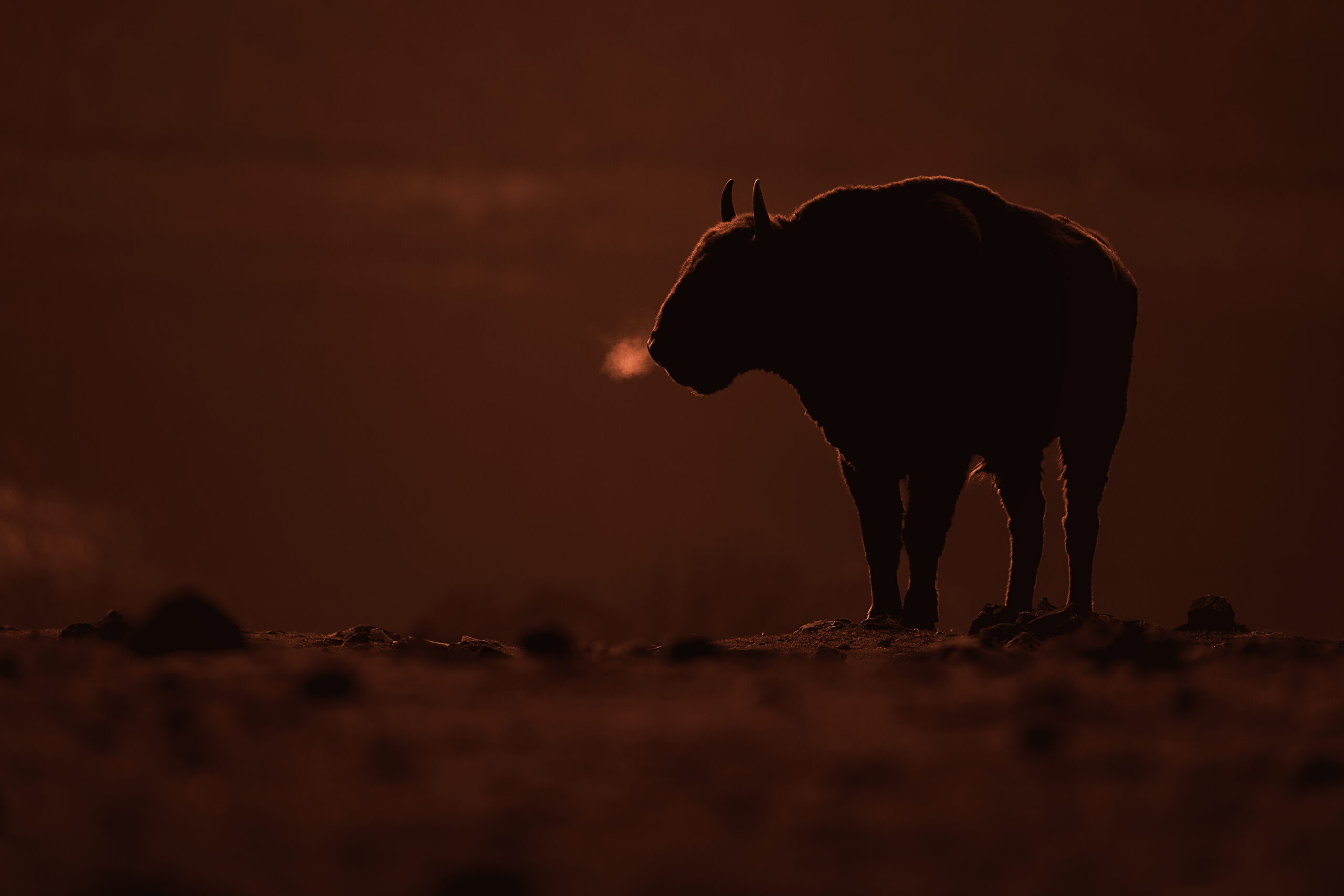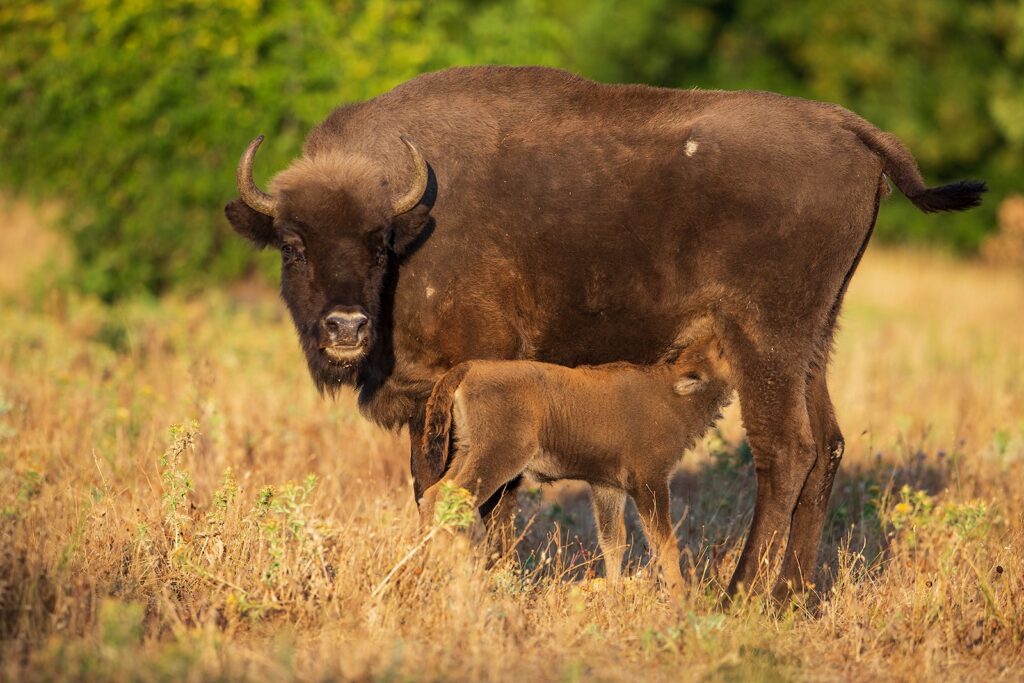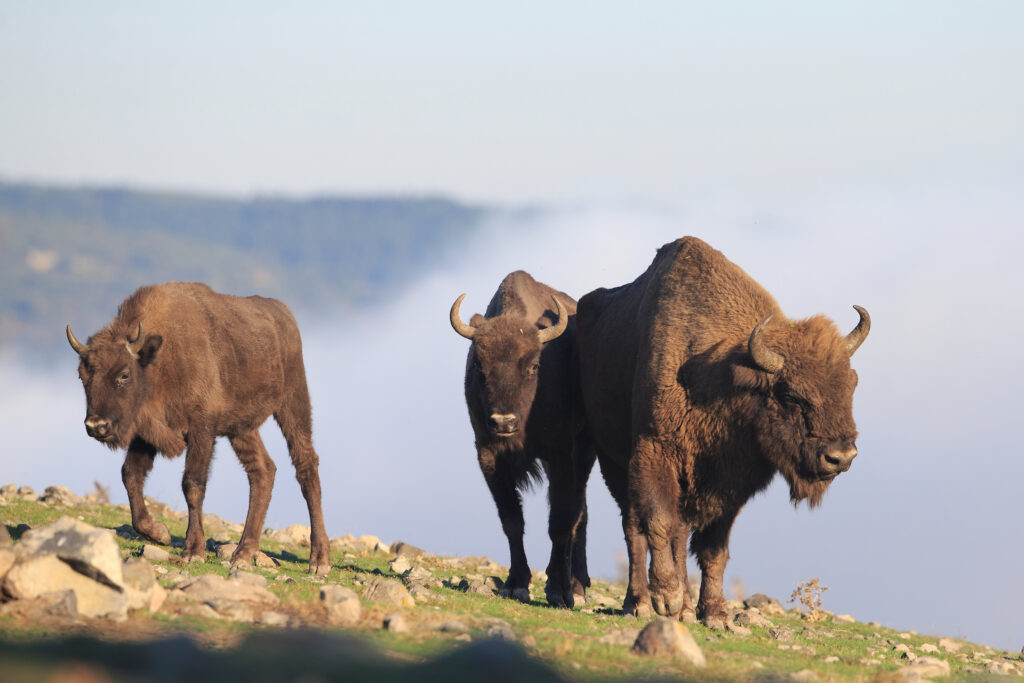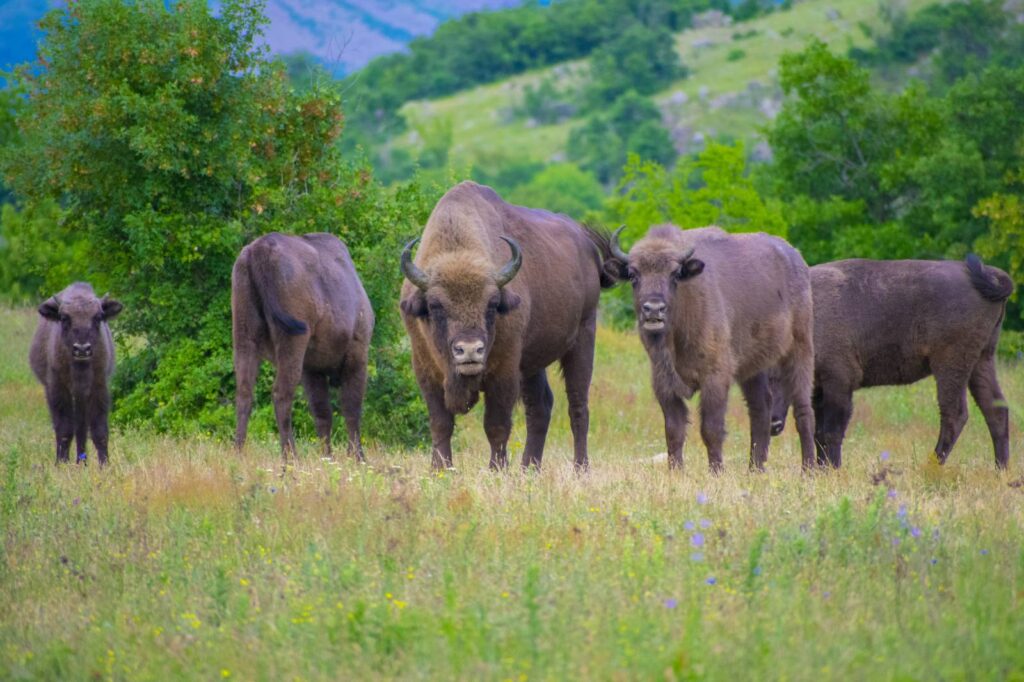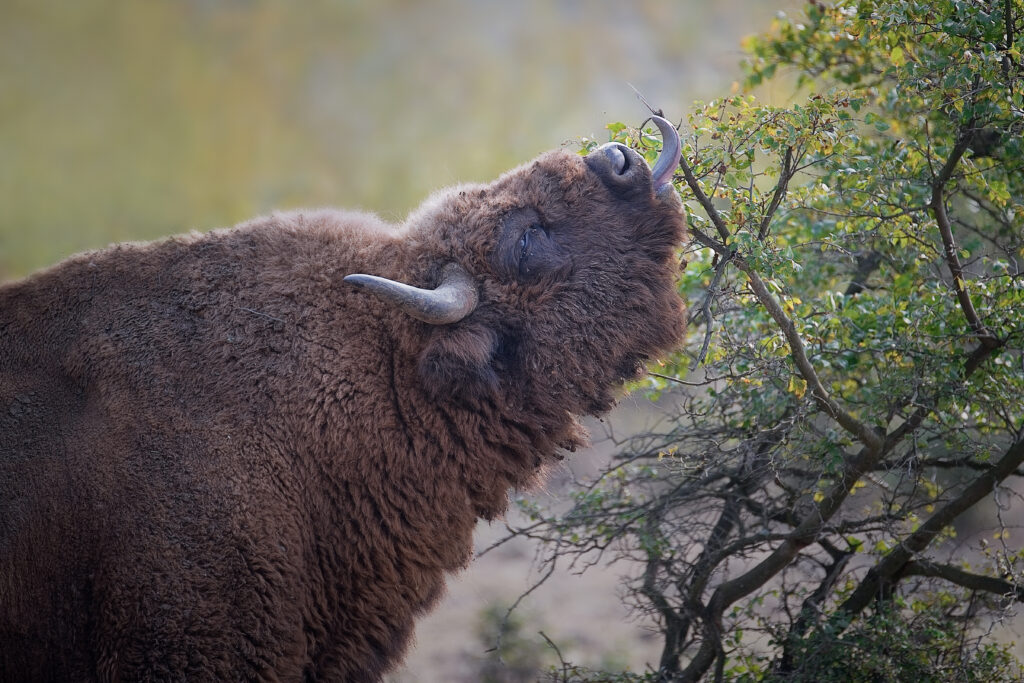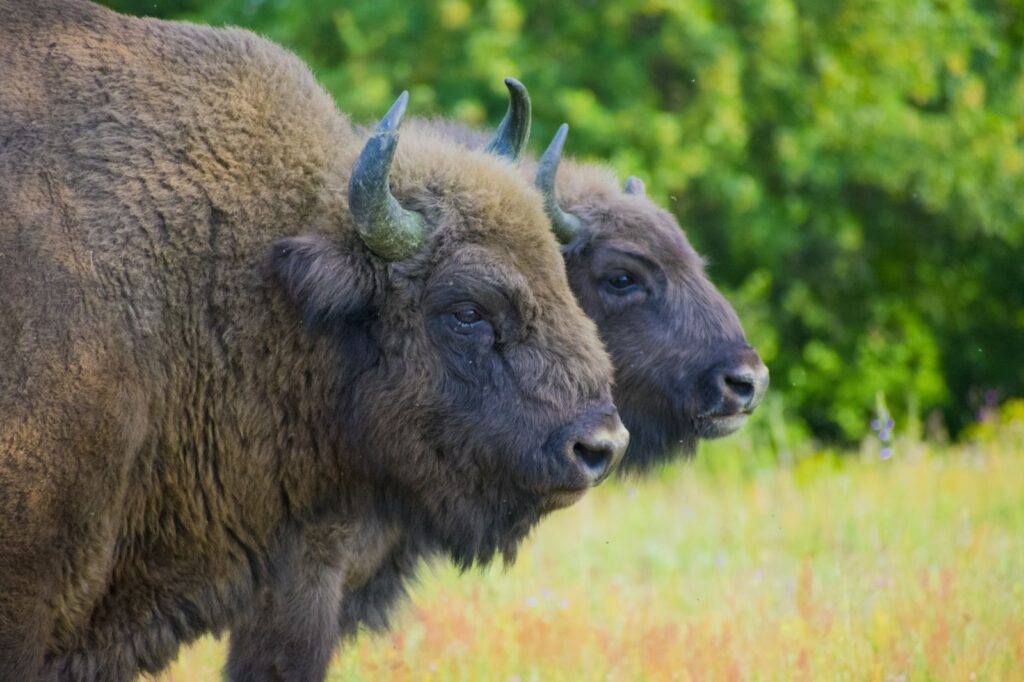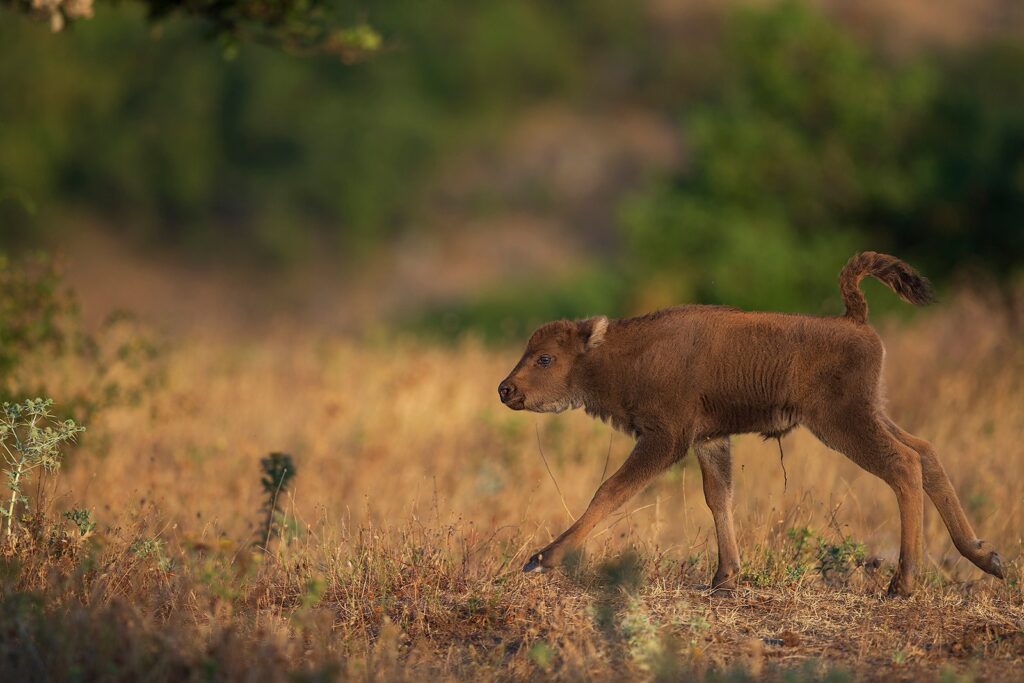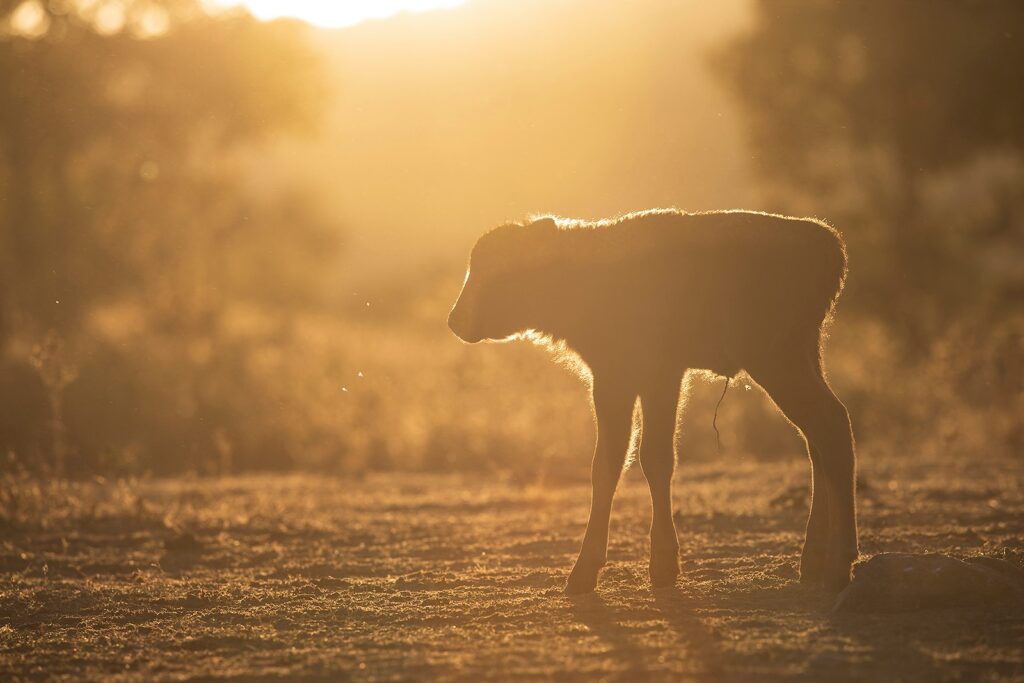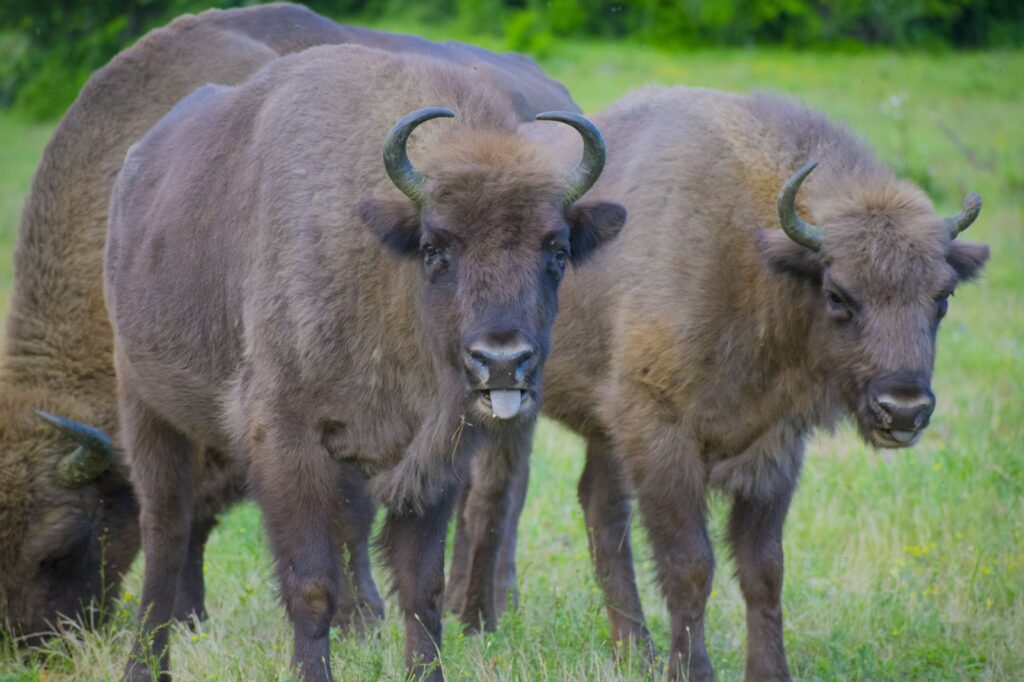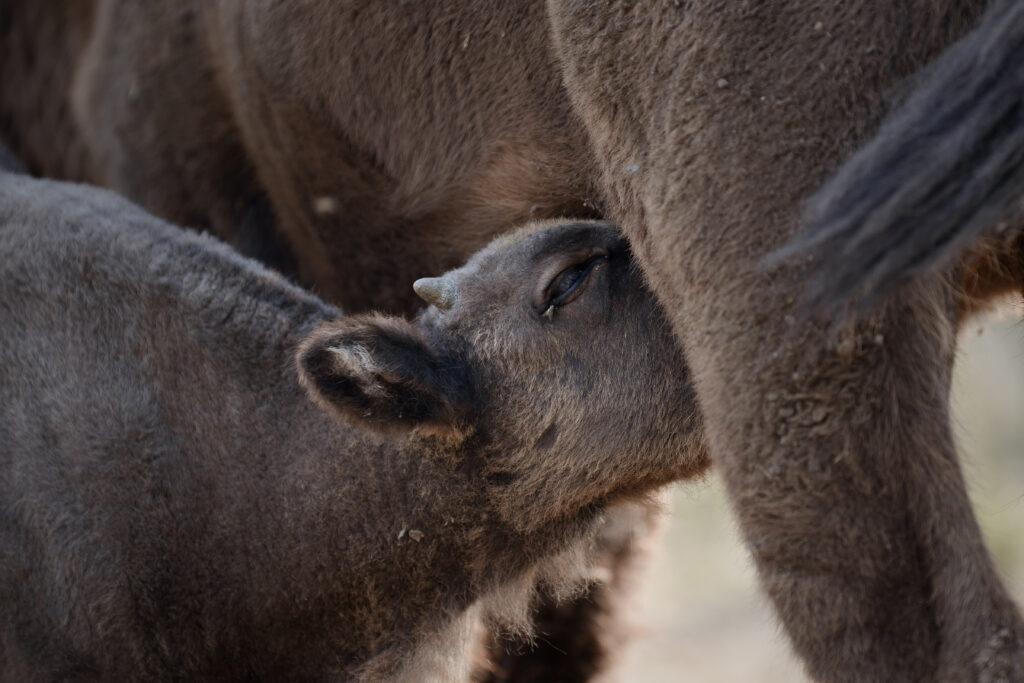European bison
The European bison, a cousin of the North American bison, is the largest herbivore in Europe and a key species in the development of open forest ecosystems. The bison has become one of the symbols of nature conservation in Europe. The history of this iconic species serves as an example of how only within a hundred years a species can be brought to the brink of extinction, and how, as a result of many efforts can made a remarkable comeback in Europe.
In the antiquity, the European bison was widespread in Europe and the Balkans. The bison got extinct in the wild in Europe in the early 20th century due to severe hunting pressure and habitat loss. In Bulgaria, the bison, also known as wisent or “zubar” in Bulgarian, has disappeared in the Middle Ages. After a large-scale breeding and reintroduction programme based on individuals remaining in captivity, wild populations have been re-established in areas of central and eastern Europe, with a stronghold in Poland and Belarus. A small herd of European bisons was also reintroduced in the sixties in a hunting reserve in Northern Bulgaria.
The European bison is the heaviest surviving wild land animal in Europe; a typical European bison is about 2.1 to 3.5 m long, and 1.6 to 1.95 m tall. At birth, calves are quite small, weighing between 15 and 35 kg (33 and 77 lb). Body masses among adults males ranges between 400 to 920 kg and among females, with a range of 300 to 540 kg.
Еuropean bison feeds on grass, branches, bark and shrubs and trees, and are key for open forest ecosystems. They live in herds dominated by the oldest and most experienced female. Cows usually have a gestation period of 9 months, and typically give birth to one calf at a time and take care of it for two years. Bulls reach sexual maturity at the age of two, while cows do so in their third year.
In October 2013, five bison were brought to the Studen Kladenets Game Reserve in region. Despite the initial difficulties, the animals have successfully adapted and in 2015 for the first time in the Rhodopes for the first time centuries the first bison calf was born. In April 2017 the bison couple and Rewilding Rhodopes team welcomed the second offspring of the bison couple.
Over the next few years, the bison family grew. In 2017, two more animals joined the herd, which were donated by the Zuhl zoo in Germany. The last addition of two young females came at the end of 2020, and the animals were donated from Sóstó Zoo (in collaboration with Miskolc Zoo) and Bratislava Zoo in Slovakia. In 2019, the bison were released into the wild and in the same year, for the first time in centuries, the first bison was born in the Rhodopes, and the following year the herd grew by two more cubs. At the beginning of 2021, the group already has 11 animals.
The return of the bison contributes to the preservation of the wildlife in the Eastern Rhodopes, one of the richest regions of biodiversity in Europe and supports the development of the region as attractive destination for ecotourism. In Studen Kladenets rewilding area the bisons coexist with deer crows, red deer, wolves, vultures and many other rare and endangered species.
The reintroduction of this iconic species is initiated by New Thracian Gold – Bulgaria Foundation in partnership with the Dutch organization ARK Nature and the Union of the Hunters and Fishermen of Bulgaria and with the financial support of America for Bulgaria Foundation.This was the first step for their reintroduction in the Rhodopes and one of the highlights of the project “The Wild World of the Eastern Rhodopes”.
